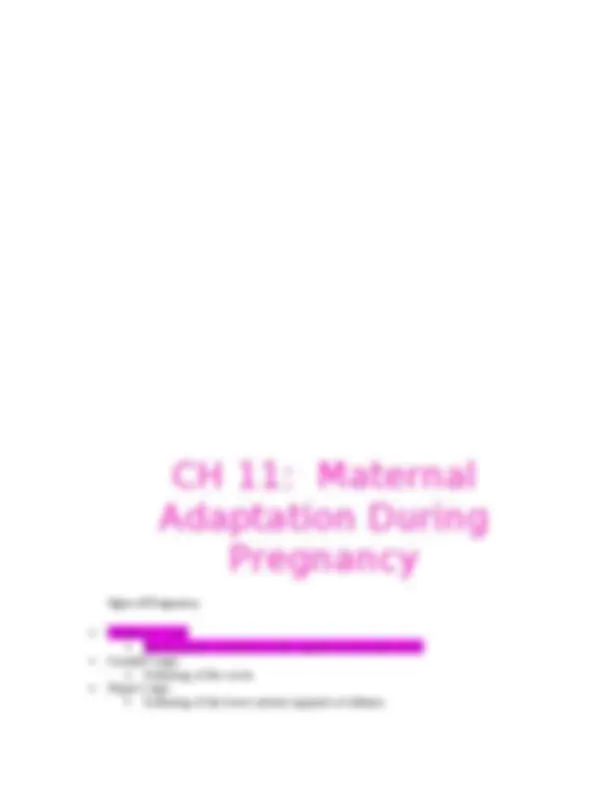















Study with the several resources on Docsity

Earn points by helping other students or get them with a premium plan


Prepare for your exams
Study with the several resources on Docsity

Earn points to download
Earn points by helping other students or get them with a premium plan
Community
Ask the community for help and clear up your study doubts
Discover the best universities in your country according to Docsity users
Free resources
Download our free guides on studying techniques, anxiety management strategies, and thesis advice from Docsity tutors
A comprehensive overview of various aspects of reproductive health and pregnancy. It covers topics such as the treatment of underlying causes of abnormal uterine bleeding, premenstrual syndrome (pms), fertility awareness methods, the menopausal transition, and sexually transmitted infections (stis). The document also delves into the stages of fetal development, the functions of the placenta, the role of amniotic fluid, and the various reproductive changes that occur during pregnancy. It discusses nursing management during pregnancy, including preconception care, reasons for seeking care, obstetric history, laboratory tests, risk profiles, visit schedules, assessments, and the assessment of fetal well-being through various diagnostic procedures. This document could be a valuable resource for healthcare professionals, students, and individuals interested in understanding the complexities of reproductive health and the journey of pregnancy.
Typology: Lecture notes
1 / 21

This page cannot be seen from the preview
Don't miss anything!














From 14-44- reproductive years No period during pregnancy, menopause, pre-puberty Menarchy: first period
Chronic prolonged stress Pituitary, ovarian, or adrenal tumors Depression Hyperthyroid or hypothyroid conditions Malnutrition Hyperprolactinemia Rapid weight gain or loss Chemotherapy or radiation therapy to the pelvic area Vigorous exercise, such as long-distance running Kidney failure Colitis Chemotherapy, irradiation Use of tranquilizers or antidepressants Postpartum pituitary necrosis (Sheehan syndrome) Early menopause
After child bearing years= no more period
Ch. 10: Fetal Development and Genetics Stages of Fetal Development
CH 11: Maternal Adaptation During Pregnancy Signs of Pregnancy
Musculoskeletal Softening and stretching of ligaments holding sacroiliac joints and pubis symphysis (open Lordosis Waddle gait Skin: Hyperpigmentation Linea nigra (down the umbilical area) Striae gravidarum “stretch marks”. This is genetic!! Decline in hair growth; increase in nail growth you will shed hair Supine hypotensive syndrome (vena caval syndrome). The gravid uterus compresses the vena cava when the woman is supine. This reduces the blood flow returning to the heart and may cause maternal hypotension.
Pituitary Pituitary gland: enlargement; decrease in TSH, GH; inhibition of FSH and LH (cant get more pgrenant these cause ovulation); increase in prolactin, MSH; gradual increase in oxytocin Thyroid gland: slight enlargement; insulin resistance nutritional:
Risk Profile , lifestyle habits, or social concerns that might unfavorably affect pregnancy (smoking or drinking). Encourage folic acid 400 to 800 (At risk) mcg per day Visit schedule
First-Trimester Discomforts